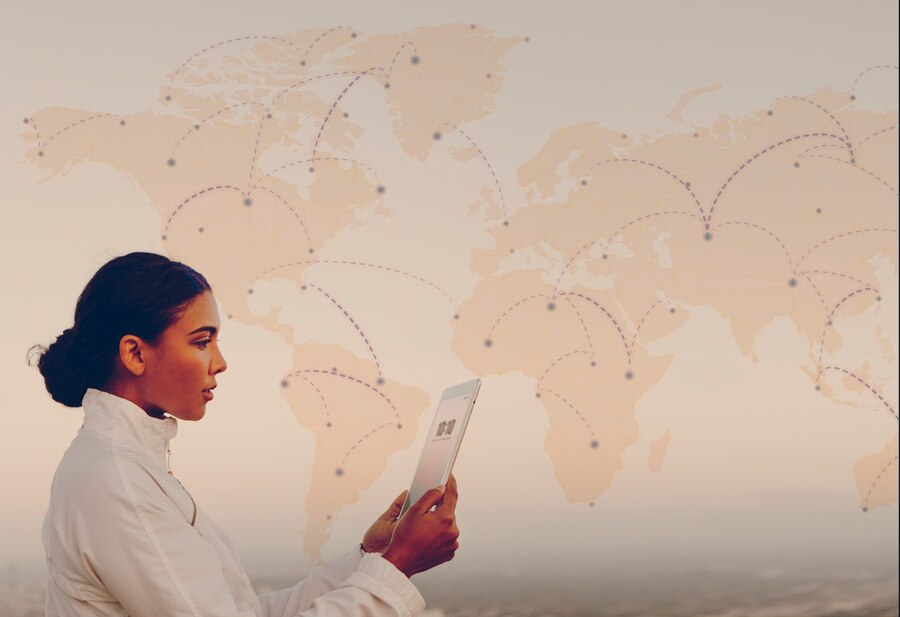Global trade has been a cornerstone of economic development for centuries, connecting nations, industries, and consumers in an intricate web of exchanges that fuel the world economy. In recent years, the global trade landscape has undergone significant transformations, driven by technological advancements, changing consumer demands, and geopolitical shifts. As we move further into 2025, global trade is witnessing new challenges and opportunities that are reshaping its future.
The Rise of Global Trade: A Historical Perspective
The concept of global trade has existed for millennia, with ancient civilizations like the Phoenicians and Romans establishing trade routes that spanned continents. However, it wasn’t until the Industrial Revolution that global trade took on its modern form. The invention of steam engines, improvements in transportation infrastructure, and the advent of mass production techniques created new avenues for the exchange of goods.
In the 20th century, global trade was further accelerated by the formation of international organizations like the World Trade Organization (WTO) in 1995, which promoted trade liberalization, reduced tariffs, and created a framework for resolving trade disputes. Over the past few decades, advances in digital technologies, logistics, and supply chain management have made it easier for businesses to access international markets, further boosting global trade.
Key Drivers of Global Trade in 2025
As we step into 2025, several key factors are driving the evolution of global trade. These factors are shaping how goods and services flow across borders and creating new opportunities for businesses and governments alike.
1. Technological Innovation
The rapid advancement of technology has been a primary driver of global trade, enabling faster, cheaper, and more efficient transactions. The digital transformation of trade has been especially profound in areas such as e-commerce, supply chain management, and financial services.
Platforms like Amazon, Alibaba, and Shopify have allowed businesses of all sizes to sell products internationally, breaking down traditional barriers to entry. The expansion of digital payments, blockchain technology, and artificial intelligence (AI) has also enhanced cross-border transactions, making them more secure and transparent.
For example, AI-driven analytics are helping businesses optimize their supply chains by predicting demand fluctuations, reducing costs, and improving delivery times. These innovations are not only helping multinational corporations but also empowering small and medium-sized enterprises (SMEs) to participate in global trade.
2. E-commerce and Digital Trade
E-commerce has become one of the most significant trends driving global trade. The ability for businesses to reach international customers without the need for physical storefronts has opened up new markets and created a level playing field for global commerce. In 2025, global e-commerce sales are expected to continue their upward trajectory, as more consumers shift to online shopping.
Cross-border e-commerce platforms, digital marketing, and logistics networks are enabling businesses to expand globally. The rise of mobile commerce, supported by mobile payment systems, is particularly important in emerging markets where smartphone penetration is high.
3. Global Supply Chains and Outsourcing
For decades, global supply chains have been the backbone of international trade. Companies source raw materials and components from different parts of the world to reduce production costs and improve efficiency. Countries like China, India, and Vietnam have become key manufacturing hubs due to their cost-effective labor and access to raw materials.
However, the COVID-19 pandemic and subsequent supply chain disruptions exposed the vulnerabilities of relying heavily on a few global suppliers. As a result, businesses are increasingly looking to diversify their supply chains, considering nearshoring or reshoring some production closer to home to reduce risks associated with long-distance trade.
Challenges Facing Global Trade in 2025
While global trade continues to thrive, it is not without its challenges. From political uncertainties to environmental concerns, several factors are reshaping how trade operates on the global stage.
1. Trade Wars and Protectionism
The rise of protectionism and trade wars in recent years has created significant barriers to free trade. For example, the U.S.-China trade war, which began in 2018, resulted in tariffs and retaliatory measures that disrupted the flow of goods and services between the two largest economies in the world.
In 2025, there are concerns that these protectionist trends could intensify, as more countries adopt measures to protect domestic industries. While tariffs and non-tariff barriers are often used as tools of economic policy, they can also lead to higher costs for businesses and consumers, potentially stalling global economic growth.
2. Geopolitical Instability
Geopolitical tensions continue to impact global trade, especially in key trade routes and strategic regions. Disputes over territory, military conflicts, and political instability can disrupt trade flows, creating uncertainty for businesses relying on global supply chains.
The ongoing conflict in Ukraine, tensions in the South China Sea, and disputes in the Middle East have made businesses cautious about expanding into certain regions. For example, disruptions in the flow of oil and gas from the Middle East can have a ripple effect on global energy markets, which in turn affects trade in other sectors.
3. Environmental Sustainability
Environmental concerns are increasingly influencing global trade policies. The growing focus on climate change, carbon emissions, and resource conservation is forcing companies to rethink their production methods and supply chain strategies. The European Union’s Green Deal and carbon border taxes are examples of efforts to reduce the environmental impact of global trade.
Conclusion
global trade in 2025 is at a crossroads, shaped by both challenges and opportunities. As nations, businesses, and consumers navigate this evolving landscape, it will be critical to find a balance between embracing technological innovations, addressing environmental concerns, and managing geopolitical risks. With the right policies and strategies, global trade can continue to drive economic growth, innovation, and prosperity for years to come.







